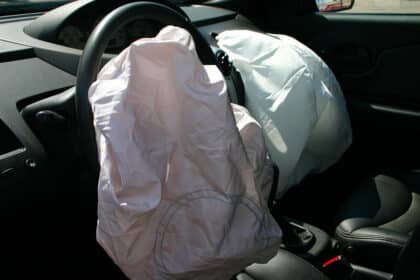 Snow-covered mirror
Snow-covered mirror
Photo: The News Wheel
While fully autonomous vehicles are still a thing of the future, advanced technologies allow many vehicles to have self-driving capabilities, making for more convenient drives. Nevertheless, current versions of autonomous vehicles are struggling to drive in the snow, which is why MIT is working to improve the vehicles’ technologies.
Protection on and off the Road: 2020 Jeep Renegade is Top Safety Pick
Since autonomous vehicles utilize lidar and cameras to navigate, they have difficulty utilizing self-driving technologies when visibility is poor, such as when there’s snow, rain, or fog. For this reason, researchers MIT’s Computer Science and Artificial Intelligence Lab are looking into a new, innovative way for self-driving technologies to work.
The researchers believe that the localizing ground-penetrating radar could be a solution. The preexisting technology would allow the vehicle to send electric pulses through the ground in order to map out the soil composition underneath the road.
The pulses would then allow the vehicle to discern its location without the need for lidar or cameras. With LGPR technology, autonomous vehicles would accordingly be able to detect lane lines and drive you to your destinations, even on snow-covered roads.
“Our work demonstrates that this approach is actually a practical way to help self-driving cars navigate poor weather without actually having to be able to ‘see’ in the traditional sense using laser scanners or cameras,” MIT professor Daniela Rus said in an article on the CSAIL website.
Researchers also noted maps of the ground tend to be more reliable in the long term than above-ground maps, like the ones vehicles are currently using. This is because ground maps don’t need to change as often as above-ground maps. Nevertheless, with cars, pedestrians, and other obstacles sharing the road, the LGPR technology would need to work in conjunction with additional technology for self-driving to be more successful.
Traveling With Loved Ones: The Best Family Truck of 2019
LGPR technology won’t be implemented in vehicles for some time, but it seems hopeful that it will help autonomous vehicles better drive in the snow and other hazardous conditions.
Amanda Drago lives in West Chester, Ohio with her wonderful family, which includes her adorable dog, Coco. Amanda recently graduated from Miami University with degrees in both marketing and creative writing. However, if she was ever forced to change career paths, she imagines that she would train dogs for movies. In her spare time, she enjoys reading, writing, and watching Netflix. She also has a special place in her heart for theatre and purchases tickets to as many shows as she can. See more articles by Amanda.









